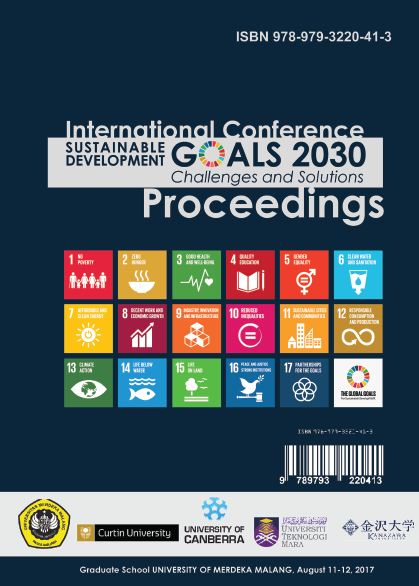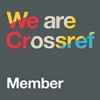Influence of Fishermen's Exchange Rate on The Welfare of The Fishing Community in the Coastal Area of Bone Bolango Regency
DOI:
https://doi.org/10.26905/icgss.v9i1.15755Keywords:
welfare, total fishermen's income, total fishermen's expensesAbstract
The purpose of this study is to find out the Welfare of the Fishing Community on the Coast of Bone Bolango Regency, and the target of this study is to study, especially, the Welfare of the Fishing Community using the indicators of Total Fishermen's Income and Total Fishermen's Expenditure. The method used in this study is the Quantitative Descriptive Method, and for data collection, using Primary Data through interviews, questionnaires, and observations. For the population, the number of fishermen in the Coast of Bone Bolango Regency is 1,307 fishermen, and the sample taken is 44 people, for the sampling technique, namely using the Slovin formula. This study uses the Multiple Linear Regression Analysis method. The results of this study show that the total income of fishermen has a positive effect on the welfare of the fishing community because this is because the income from the fisheries sector is the main livelihood of villagers located on the coast of Bone Bolango Regency and is one of the efforts to meet all the needs of their families. As for the total expenditure of fishermen, it has a negative effect, which can be seen from the value of the total expenditure coefficient, giving a negative and significant sign for the welfare of fishermen. Why is that, if the income received is greater than the expenses, it will result in a lack of funds to go to sea or even meet daily needs?
Downloads
References
Abdina, F. (2022). Analysis of Income and Expenditure of Traditional Fisherman's Households In Teluk Nibung District, Tanjung Balai City. 5 (2), 100 – 109.
Firdaus, M. (2013). Fisherman's household expenditure and its relationship with poverty: The case is in West Ketapang Village, Sampang Regency, East Java. 8 (1) 49 – 60.
Ikhsan Fuandy. (2016). Perception of Coastal Communities Towards Women's Leadership Fishermen on Pramuka Island, Thousand Islands. 14 (02). https://doi.org/10.46937/14201613760
Imam Triarso. (2021). Factors Affecting Fishermen's Exchange Rate in Fishermen Artisanal at PPN Pekalongan. 11, 198 – 210.
Iskandar, R. (2022). The Effect of Participation Level on Community Welfare Level in the Development of the Jagapati Waterfall Tourist Attraction, Garut Regency. 1 (7), 2213–2225.
Kurniawan. (2021). Analysis of the Fishermen's Exchange Rate of Rebon Shrimp Fishing Gear (Acetes Indicus) in Toboali District. 10 (02), 146–155.
Latif, M. R. (2018). The influence of perception about business capital, location, and type of trade. 18 (05), 174 – 185.
Lawendatu, A. (2022). Analysis of Fishermen's Exchange Rates in Capture Fisheries Business. 10 (1), 159–171.
Masyhuri, I. (2003). Poverty in the Fishing Community. Society and culture. 5 (01), 63–82.
Mirna. (2016). Participation of Fisherman's Wives in Helping the Family Economy in the Village BontangKuala North Bontang District, Bontang City. EJournal Sociology-Sociology, 4 (3), 113 – 126. ejournal.sos.fisip-unmul.ac.id
Olilingo, F. Z., & Santoso, I. R. (2022). Impact Evaluation of Fishing Boat Assistance ( Case Study of Fishermen in Tomini Bay, Gorontalo Province ). 02 (04), 122-136.https://doi.org/10.98765/ajmesc.v2i04.152
Pandey, E. V. (2021). Exchange Rate of Fishermen Business Light Boat in Papusungan South Lembeh SubdistrictBitung North Sulawesi Province. 5, 48 – 55.
Rahmad, S. (2017). Effect of Fishermen's Exchange Rate (Fishermen's Income, Non-Fishermen's Income, Fishermen's Expenses) on Community Welfare (Education, Health, Physical Condition of the Home) In the Hero Village. 10 (02), 1836-1843.
Salam, A. (2018). Fishermen Welfare Level in Torosiaje Laut Village. 6, 98 – 102
Sembiring, R. (2017). Effect of Fishermen's Exchange Rate (Fishermen's Income, Non-Fishermen's Income, Fishermen's Expenditure, Non-Fishermen's Expenditure) Towards Community Welfare (Education, Health, Physical Condition of the House) In the Hero Village. 10 (02), 1836 – 1843.
Sembiring, R. (2018). Effect of Fishermen's Exchange Rate (Fishermen's Income, Non-Fishermen's Income, Fishermen's Production, Non-Fishermen's Production) on the well-being of the Community (Education, Health, Physical Condition of the House) in the Hero Village. Journal of Abdi Ilmu, 10 (2), 1836–1843. http://jurnal.pancabudi.ac.id/index.php/abdiilmu/article/view/42
Setiawinata, A. P., Wahyudi, B., & Purba, Priza Audermando. (2019). The Effect of Product Production Arrest, household expenditure and accessibility of financial institutions Formal to the exchange rate of fishermen in Muara Angke, North Jakarta in 2018. Journal of Defense Economics, 5 (2), 209 – 228.
Sriyono. (2021). Improving the Welfare of the Fishing Community in the New Reality Era Through Inclusive Financing Model: Al Mudharobah Perspective. 7 (01), 81 – 89.
Suheman, A. (2019). Factors Affecting the Welfare Level of Small Fishermen At the Pekalongan VAT. 10 (02), 205 - 215.
Syaripah, W. (2017). Analysis of the level of fishermen's welfare according to income patterns and Fisherman's Production.
Utama, S. (2018). Analysis of factors affecting the welfare of fishermen in Jembrana Regency.
Widyaningsih, E., & Muflikhati, I. (2015). Expenditure Allocation and Welfare Level Family in the Bagan Fisherman's Family. Journal of Family and Consumer Sciences, 8 (3), 182-192. https://doi.org/10.24156/jikk.2015.8.3.182http://www.u.arizona.edu/~rlo/readings/278800.pdf
Downloads
Published
How to Cite
Issue
Section
License
Copyright (c) 2025 Proceedings of International Conference of Graduate School on Sustainability

This work is licensed under a Creative Commons Attribution-ShareAlike 4.0 International License.
Authors who publish in this journal agree to the following terms: Proceeding of International Conference of Graduate School on Sustainability is licensed under Creative Commons Attribution-ShareAlike 4.0 International. Creative Commons Attribution-ShareAlike 4.0 International License (CC BY 4.0) is applied when mandated by research funders, such as those who have signed. Open Access articles in Jurnal Cakrawala Hukum are published under theCreative Commons Attribution-ShareAlike 4.0 International (CC BY 4.0) license. The copyright of the received article shall be assigned to the journal as the publisher of the journal. The intended copyright includes the right to publish the article in various forms (including reprints). The journal maintains the publishing rights to the published articles. Authors must agree to the copyright transfer agreement by checking the Copyright Notice column at the initial stage when submitting the article.









